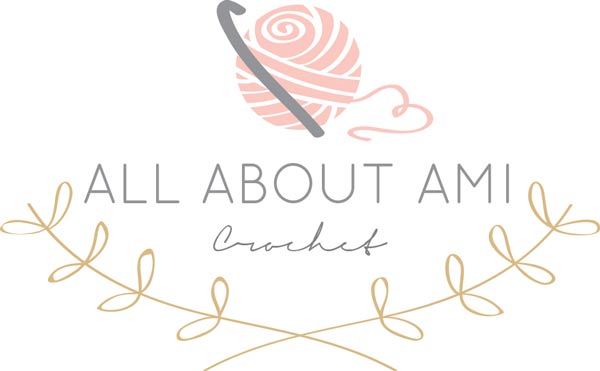***You can purchase an INEXPENSIVE AD-FREE PDF of this pattern on Etsy HERE! This beautifully formatted PDF includes the step-by-step pictures and pattern and is a total of 9 pages including the cover page! You can also find this pattern in my Easy & Modern Knits Pattern Bundle found HERE (includes over 30 of my knit patterns at a discounted price)! Lion Brand Yarn has made a convenient kit HERE that includes the pattern and all the Hue + Me yarn needed to make this chunky sweater (choose any color)!
***The step-by-step tutorial with plenty of photos can be found HERE!
***Join the Ridgeline Cardigan Knit-Along HERE! Add this design to your Ravelry queue HERE!
Knit this gorgeous chunky cardigan with striking ridges using a bulky wool blend yarn! The Ridgeline Cardigan is a seamless design that works up very quickly. You will love knitting this beautiful and stylish piece and layering it over all your outfits!
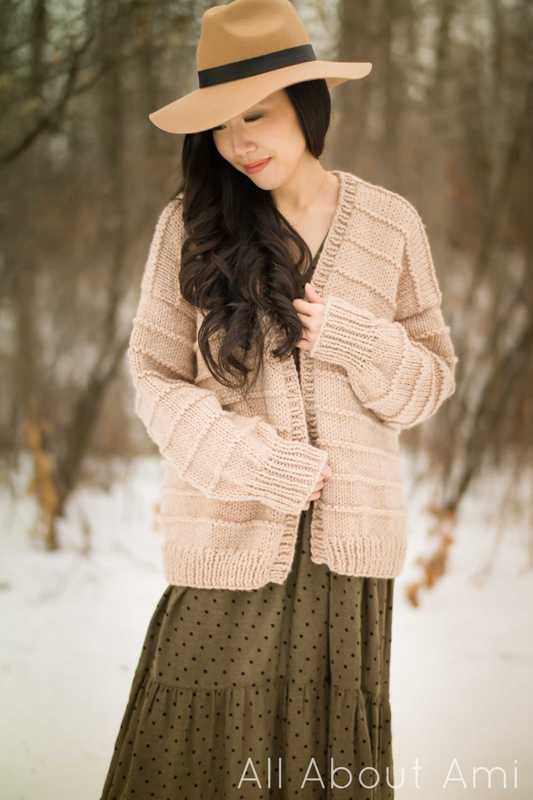
Materials
- Hue + Me Yarn (bulky level 5, 80% acrylic/20% wool) in “Desert”- see approximate yardage and number of skeins required below. Purchase the convenient KIT HERE that contains all the yarn you need! Please compare the yardage if you are thinking of substituting the yarn (e.g. “Woolspun” and “Color Made Easy” have different yardage than Hue + Me yarn, so you cannot simply purchase the same number of skeins).
- Clover Takumi 8 mm needles with 48″ cord and 16″ cord; 6.5 mm needles with 16″ cord
- Yarn needle
- Steamer for blocking
- Lock ring and O-ring stitch markers
- Clover Felting Tool (optional): for felting yarn ends together when adding a new skein
Gauge:
11 stitches and 17 rows = 4 inches in stockinette + garter ridges worked in turned rows (for panels)
11.5 stitches and 17 rounds = 4″ in stockinette + garter ridges worked in rounds (for sleeves)
Final Measurements:
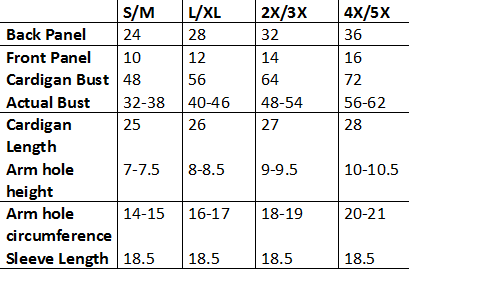
Approximate Yardage/Number of Skeins Required:
Small/Medium: 7 skeins, ~ 790 g/867 yds
Large/XL 8 skeins, ~ 920g/1012 yds
2X/3X: 9 skeins, ~ 1090 g/1195 yds
4X/5X: 10 skeins, ~ 1245 g/1366 yds
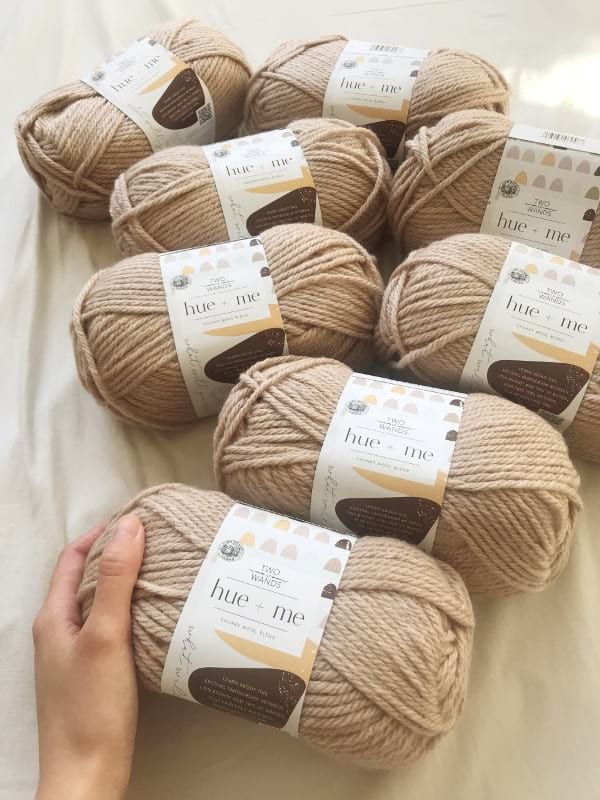
Abbreviations:
- K2tog To knit 2 stitches together, insert the right needle into two stitches at the same time and knit. This will result in a decrease of one stitch.
- Three needle bind off: 1)Place two pieces together so that right sides are facing each other (wrong sides are outwards). Both pieces should have live stitches on the needles. 2) Take a third needle and insert it into the first stitch knitwise on the first needle (closest to you), then insert the needle into the first stitch knitwise on the second needle. 3) Wrap the working yarn around the third needle. 4) Pull the stitch through both stitches (treating them as if they were one stitch). 5) Pull the stitches off the two needles creating one on the third needle. 6)Repeat above steps until two stitches have been created on third needle. Pull the first stitch over the second stitch to cast it off. Keep repeating so that all the stitches have been casted off (you should always have a maximum of 2 stitches on the third needle at any time). See how to work the three needle bind off in this video HERE!
Notes:
- The Ridgeline Cardigan is worked seamlessly. The back panel and two front panels are worked together (initial cast on is # of stitches for the back panel + the # of stitches for both front panels). This part is worked flat in turned rows.
- The panels are worked in stockinette stitch interspersed with garter ridges (rows of garter stitch). Each chunk is comprised of a section of stockinette rows and one garter ridge (8 rows total – the garter ridge is every 8th row).
- Once a certain height has been achieved (bottom of arm hole), the piece is split off into 3 different sections: the back panel and two front panels. Stitches are placed on hold while each panel is worked one at a time.
- Once desired height has been achieved (height from bottom of arm hole to shoulders), the top of each front panel is joined together with the back panel by using the 3 needle bind off.
- A ribbed collar is worked by picking up stitches along the front panels and across the back panel.
- Stitches are picked up around the arm hole to knit the sleeves. The sleeves are knit in the same pattern as the front and back panels (stockinette interspersed with garter ridges). However, the sleeves are worked in continuous rounds using 16” circular needles.
- Towards the bottom of the sleeve and right before the ribbing, two decrease rounds are worked. Then, the ribbed cuff is created. You can try on your cardigan as you go to ensure your sleeve is your desired size and length.
- It becomes more difficult using the 16” circular needles when there are fewer stitches after the decreases – you can still methodically rotate the stitches around the cord or switch to a larger cord and use the magic circle technique (or switch to DPN’s).
- Note that there are specific instructions for certain sizes when working the heights of the three body panels and the decrease rounds of the sleeves – be sure to follow the instructions for your specific size!
- Block your cardigan at the end to help smooth the stitches and relax the fibers.
- You can add optional pockets if you desire.
- When adding a new skein of yarn, you can felt the yarn ends together with a felting tool (instead of having to tie knots and weave in the ends). Check out my blog post HERE to see how to felt the yarn ends together.
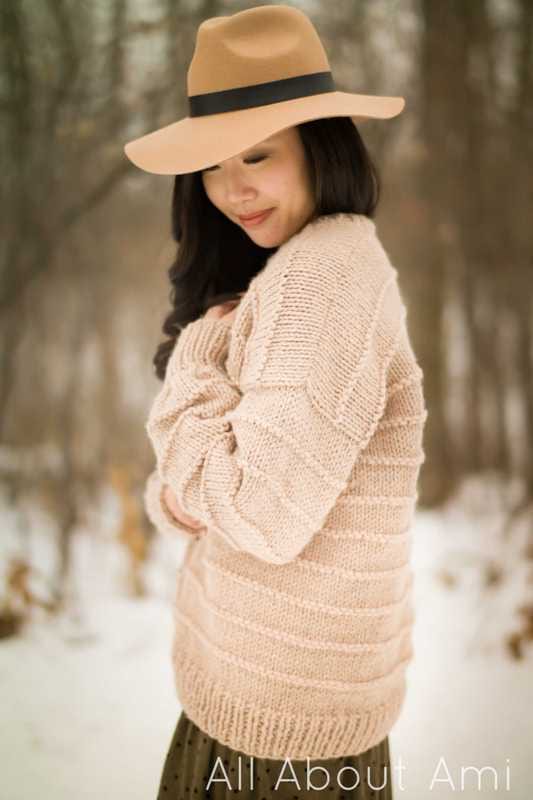
Sizing Notes:
- This drop sleeve cardigan is oversized, relaxed, loose, and slouchy with 10-16″ of positive ease built into the design. This means that if the actual bust of your body is 32″ (typically a size small), the bust of the size small sweater is 10-16″ larger (48″). If you do not want your cardigan to be so oversized, you can go down a size.
- I used the sizing of the popular Dotty Cardigan as my base (same amount of positive ease), so if you knitted my Dotty Cardigan in the past, you can choose the same size that you did for the Dotty Cardigan.
- Part of the front and back panels become part of the sleeve as they bend past the shoulders. The sleeve length remains the same for all sizes, but the increased width in the front and back panels help lengthen the sleeves of the larger sizes. The width of the sleeve varies by size.
- If you would like the cardigan to be wider, increase the number of stitches you cast on for the front and back panels. If you would like the cardigan to be narrower, decrease the number of stitches you cast on for the front and back panels.
- If you would like the cardigan to be longer, increase the number of rows for the back and front panels before you split off into three sections. If you would like the cardigan to be shorter, decrease the number of rows for the back and front panels before you split off into three sections.
- This pattern is written for the following sizes (I would recommend highlighting or circling the numbers for your size throughout the pattern): Small/Medium (Large/XL, 2X/3X, 4X/5X). Please note that for the stitch counts at the end of each row, the sizes are listed as follows (Small/Medium is first size after bracket): (Small/Medium, Large/XL, 2X/3X, 4X/5X).
- I am wearing a size Small/Medium, and I am 5’6 for height reference.
PATTERN:
- Back Panel + Two Front Panels
We will begin with the ribbing. Using 8 mm 48” needles,
Cast on 122 (142, 166, 186) stitches using long tail cast-on.
Row 1 (wrong side): *Purl 1, Knit 1*. (122, 142, 166, 186)
R2 (right side): *Purl 1, Knit 1*. (122, 142, 166, 186)
R3-9: Repeat Rows 1 and 2.
The ribbing is complete – we will now begin the stockinette + garter ridge section.
R10: Knit all stitches. (122, 142, 166, 186)
R11: Purl all stitches. (122, 142, 166, 186)
R12-15: Repeat Rows 10-11. (122, 142, 166, 186)
R16: Knit all stitches. (122, 142, 166, 186)
R17: Knit all stitches. (122, 142, 166, 186). The garter ridge has been created! This is the first chunk of stockinette stitches + the garter ridge.
R18-25: Repeat R10 -17. (122, 142, 166, 186). This is Chunk #2.
R26-33: Repeat R10-17. (122, 142, 166, 186). This is Chunk #3.
R34-41: Repeat R10-17. (122, 142, 166, 186). This is Chunk #4.
R42-49: Repeat R10-17. (122, 142, 166, 186). This is Chunk #5.
R50-57: Repeat R10-17. (122, 142, 166, 186). This is Chunk #6.
R58-65: Repeat R10-17. (122, 142, 166, 186). This is Chunk #7.
R66-73: Repeat R10-17. (122, 142, 166, 186). This is Chunk #8.
R74: Knit all stitches. (122, 142, 166, 186)
R75: Purl all stitches. (122, 142, 166, 186)
R76: Knit all stitches. (122, 142, 166, 186)
R77: Purl all stitches. (122, 142, 166, 186)
***We will now split the piece into three separate panels: two front panels and one back panel (the piece is currently approximately 18” in height). We will begin with the first front panel where the working yarn currently is. The number of stitches in each front panel for the various sizes are: 28, 33, 39 and 44. Place the other stitches on hold by threading the stitches through a piece of scrap yarn or keep them on an extra cord. Note that we are ending on an odd row (wrong side row) so the next row when we pick up stitches for each section should be a knit/right side row. Don’t forget you can check out the step-by-step blog post to see more specific process photos HERE.
R78: Knit all stitches. (28, 33, 39, 44)
R79: Purl all stitches. (28, 33, 39, 44)
R80: Knit all stitches. (28, 33, 39, 44)
R81: Knit all stitches. (28, 33, 39, 44). A garter ridge has been created. This is Chunk #9.
R82-89: Repeat R10-17. (28, 33, 39, 44). This is Chunk #10.
R90-97: Repeat R10-17. (28, 33, 39, 44). This is Chunk #11.
From here, please reference your size and follow the noted instructions. Different arm hole heights must be created, hence the difference in row counts for the various sizes.
For Size Small/Medium:
R98-104: Repeat R10-16. (28) [Do not add that last garter ridge row.]
R105: Purl all stitches. (28) [No garter ridge since it is so close to the shoulder seam.]
R106: Knit all stitches. Approximately 7-7.5” in height has been created from point of breaking off into 3 separate panels.
For Size L/XL:
R98-105: Repeat R10-17. (33). This is Chunk #12.
R106: Knit all stitches. (33)
R107: Purl all stitches. (33)
R108: Knit all stitches. (33)
R109: Purl all stitches. (33)
R110: Knit all stitches. (33) Approximately 8-8.5” in height has been created from point of breaking off into 3 separate panels.
For Size 2X/3X:
R98-105: Repeat R10-17. (39). This is Chunk #12.
R106-112: Repeat R10-16. (39). [Do not add that last garter ridge row.]
R113: Purl all stitches. (39) [No garter ridge since it is so close to the shoulder seam.]
R114: Knit all stitches. (39) Approximately 9-9.5” in height has been created from point of breaking off into 3 separate panels.
For Size 4X/5X:
R98-105: Repeat R10-17. (44). This is Chunk #12.
R106-113: Repeat R10-17. (44). This is Chunk #13.
R114: Knit all stitches. (44)
R115: Purl all stitches. (44)
R116: Knit all stitches. (44)
R117: Purl all stitches. (44)
R118: Knit all stitches. (44) Approximately 10-10.5” in height has been created from point of breaking off into 3 separate panels.
For all sizes: Cut off yarn but do not cast off stitches. Transfer the live stitches to scrap yarn (or keep them on cord if you have extra cords) and keep them on hold until three needle bind off at the end.
Begin working on second front panel by transferring 28 (33, 39, 44) stitches on other side onto your needles and cord (remember that the back panel is in between both front panels). Add the working yarn so that you are knitting the first row. For the second front panel, follow the exact same pattern above for Row 78 onwards till last row of size.
Once again, cut off yarn but do not cast off stitches. Transfer the stitches to scrap yarn (or keep them on extra cord) and keep them on hold until three needle bind off at the end.
Begin working on back panel by transferring 66 (76, 88, 98) stitches remaining in the middle onto your needles and cord. Add the working yarn so that you are knitting the first row. For the back panel, follow the exact same pattern above for R78 onwards till last row of size keeping in mind that the stitch count is 66, 76, 88, 98.
Once last row has been worked, it is now time to seam the front panels to the back panel by using the 3 needle bind off. Note that each panel ended off on an even/right side/knit row since we want to work the 3 needle bind off on the wrong side as it creates a ridge that will be only visible on the inside of the cardigan.
Position the front panel and back panel so that the right sides are touching each other and the wrong sides are facing outwards. Using 3 needle bind off, cast off 28 (33, 39, 44) stitches of front panel and back panel together. One front panel has been attached to the back panel. Next, cast off 10 stitches of back panel normally (not using 3 needle bind off) since this is the gap between the two front panels. Position the second front panel and back panel so that the right sides are touching each other and the wrong sides are facing outwards. Using 3 needle bind off, cast off 28 (33, 39, 44) stitches of front panel and back panel together. Now, both front panels have been attached to the back panel.
- Collar
Starting in bottom left corner, pick up 3 out of every 4 stitches along the front panel, across the back panel (pick up every stitch for the back panel portion), and down the front panel. To pick up stitches using working yarn, insert your needle into the first stitch along the edge. Yarn over, then pull up a loop. Keep inserting your needle into the next stitch, yarning over, and pulling up a loop. Watch this video HERE to see how to pick up stitches along a vertical edge.
If you have an odd number of stitches along the collar:
Row 1: *P1, K1* across. Purl last st.
Row 2: *K1, P1* across. Knit last st.
Row 3: Repeat R1.
Cast off in ribbing loosely (if too tight, the front panels will pull upwards) and weave in ends.
If you have an even number of stitches along the collar:
Row 1: *P1, K1* across.
Row 2: *P1, K1* across.
Row 3: Repeat R1.
Cast off in ribbing loosely (if too tight, the front panels will pull upwards) and weave in ends.
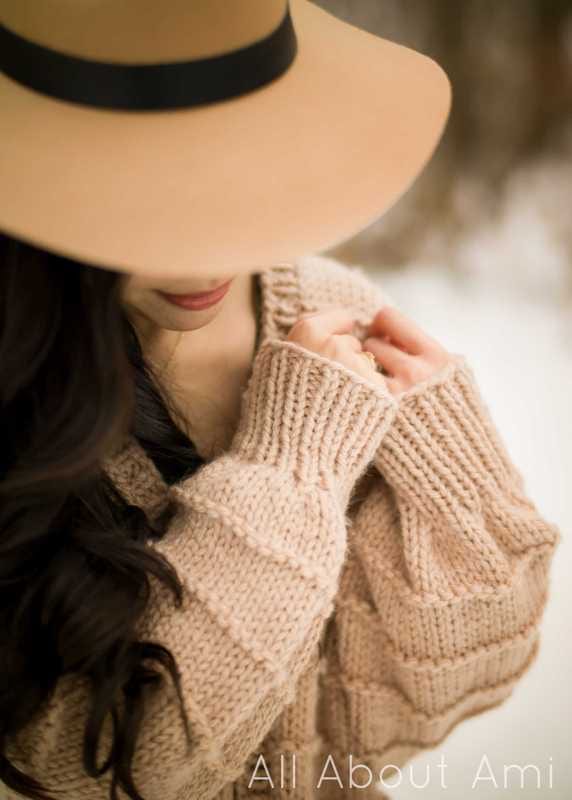
- Sleeves (make 2)
Leaving long initial end, pick up 42 (46, 52, 58) stitches around the armhole using your 8 mm 16” circular needles as evenly as possible, starting at the bottom. As a tip, you should have picked up about half the number of stitches by the time you reach the halfway point around the arm hole (at the shoulder seam). Place a stitch marker when you have picked up all the stitches to help you keep track of your rounds. We will now begin working in continuous rounds. We will be following the same general pattern as the body panels with rounds of stockinette interspersed with garter ridges (garter ridge occurs every 8th round). You can try on your cardigan as you go to ensure you are liking the size and length of the sleeve.
Round 1: Knit around. (42, 46, 52, 58)
R2-7: Knit around. (42, 46, 52, 58)
R8: Purl around. (42, 46, 52, 58). First garter ridge of sleeve has been created. This is Chunk #1.
R9-16: Repeat Rounds 1-8. (42, 46, 52, 58). This is Chunk #2.
R17-24: Repeat Rounds 1-8. (42, 46, 52, 58). This is Chunk #3.
R25-32: Repeat Rounds 1-8. (42, 46, 52, 58). This is Chunk #4.
R33-40: Repeat Rounds 1-8. (42, 46, 52, 58). This is Chunk #5.
R41-48: Repeat Rounds 1-8. (42, 46, 52, 58). This is Chunk #6.
R49-56: Repeat Rounds 1-8. (42, 46, 52, 58). This is Chunk #7.
R57: Knit around. (42, 46, 52, 58)
R58-62: Repeat R57. (42, 46, 52, 58)
We will now work two decrease rounds to decrease the number of stitches to create a beautiful cinched/tapered shape at the ribbed cuff. You can try on your cardigan to see how you are liking the length of the sleeve (the decrease rounds and ribbed cuff will add approximately 3.5” in length). Please reference your specific size for the decrease rounds:
For Size Small/Medium:
R63: *K5, K2tog*, rep 6 times. (36 sts)
R64: *K4, K2tog*, rep 6 times. (30 sts)
For Size Large/XL:
R63: K2. *K5, K2tog*, rep 6 times. K2. (40 sts)
R64: K2. *K4, K2tog*, rep 6 times. K2. (34 sts)
For Size 2X/3X:
R63: K2. *K6, K2tog*, rep 6 times. K2.(46 sts)
R64: K3. *K3, K2tog*, rep 8 times. K3. (38 sts)
For Size 4X/5X:
R63: K1. *K5, K2tog*, rep 8 times.K1. (50 sts)
R64: K1. *K4, K2tog*, rep 8 times. K1. (42 sts)
For all sizes: We will now knit the ribbed cuff. Switch to 6.5 mm needles (if you want a looser cuff, you can continue using the 8 mm needles).
R65: *K1, P1* around. (30, 34, 38, 42)
R66-77: Repeat R65. (30, 34, 38, 42)
Cast off all stitches in ribbing (you can continue adding more rounds if you want a longer cuff). Leave yarn tail to weave in end.
To join the last stitch to the first stitch of the round, thread yarn tail through tapestry needle. Thread tail under both front and back loops of first stitch. Insert needle between the “V” of the last stitch and under the back loop. You have now joined the last round together. Weave in end.
Use the long initial end you left at the beginning of the sleeve to seam any holes or gaps at the armpit area. You can steam block your cardigan to relax the fibres and smooth out the stitches!
***Please watch this VIDEO below! I tried to take process videos along the way while I was knitting the Ridgeline Cardigan! Here are some important timestamps:
0:33 Splitting off into 3 sections
3:06 Three needle bind off at shoulder seams
5:40 Picking up collar stitches
6:33 Picking up sleeves around armhole
8:25 Trying on the cardigan with one sleeve (see how you are liking the sleeve length)
9:25 Ribbed band (sleeve cuff) on 16” circular needles
11:02 Closing up the last round of the sleeve
11:55 Steam blocking the cardigan
12:04 Final Ridgeline Cardigan try on
*************************
The Ridgeline Cardigan is so warm and cozy using this wool blend yarn! Hue + Me provides such gorgeous texture, and I love how this beautiful neutral “Desert” shade matches with everything!
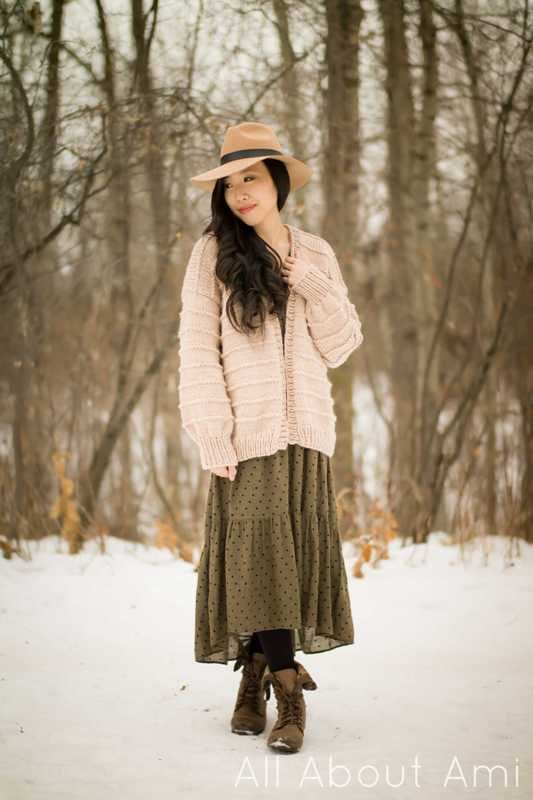
This cardigan works up incredibly quickly since you are using bulky yarn with 8 mm needles and there is no seaming whatsoever! The garter ridges also help to segment this design into chunks so that they are achievable goals that go by quickly (versus an endless sea of the same stitch).
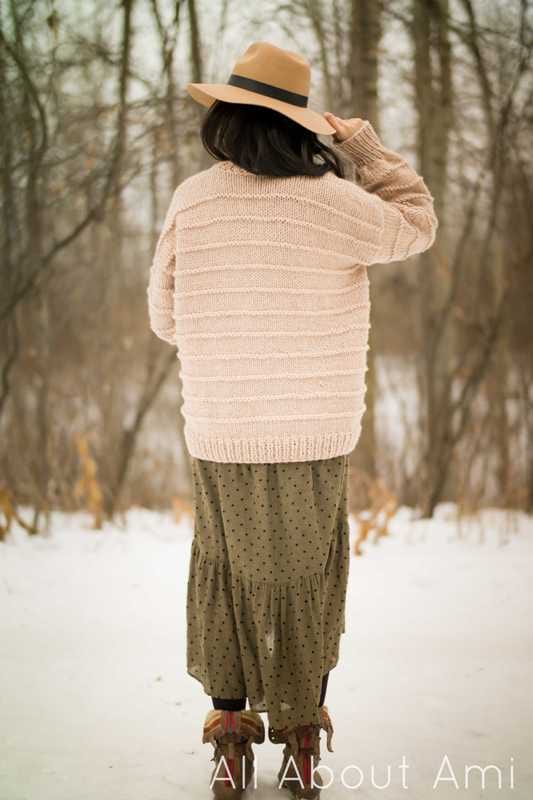
I hope you enjoy knitting the Ridgeline Cardigan and adding this cozy piece to your handmade wardrobes! It was such a joy designing and knitting this piece and I love how I continue to learn new techniques along my knitting journey. Once again, you can check out the step-by-step blog post HERE to see the making of this cardigan and check out the convenient kit HERE that contains all the yarn you need to make your own! A reader pointed out that Denise of Bayron Handmade uses this same stitch in a gorgeous raglan jacket design and a pull-over design – if you love working with this stitch, definitely check out Denise’s work HERE as you can learn some new techniques and see different construction methods! Thank you for supporting my work, everyone, and happy knitting!
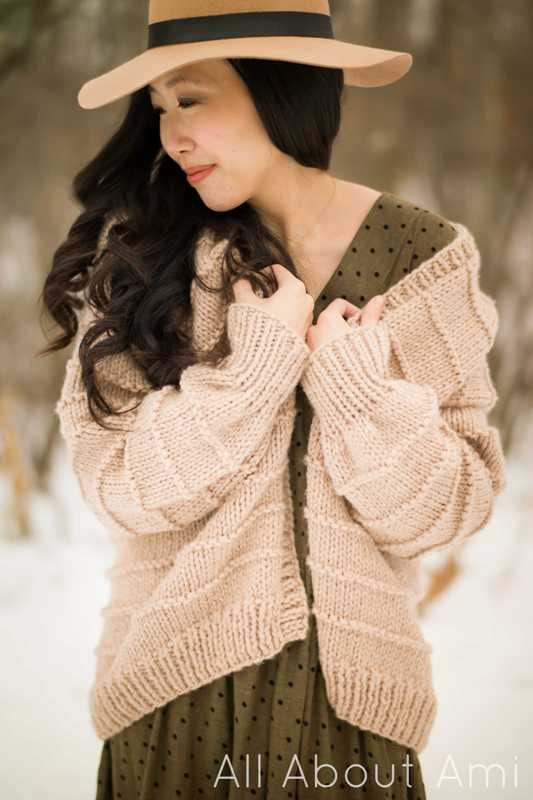
If you loved this beautiful cardigan, check out my other knit cardigan designs using a variety of different yarns: Downtown Cardigan (bulky level 5 yarn), Dotty Cardigan (bulky level 5 yarn), Midtown Cardigan (lightweight level 3 yarn), Uptown Cardigan (lightweight level 3 yarn) and Daylight Cardigan (worsted weight level 4).
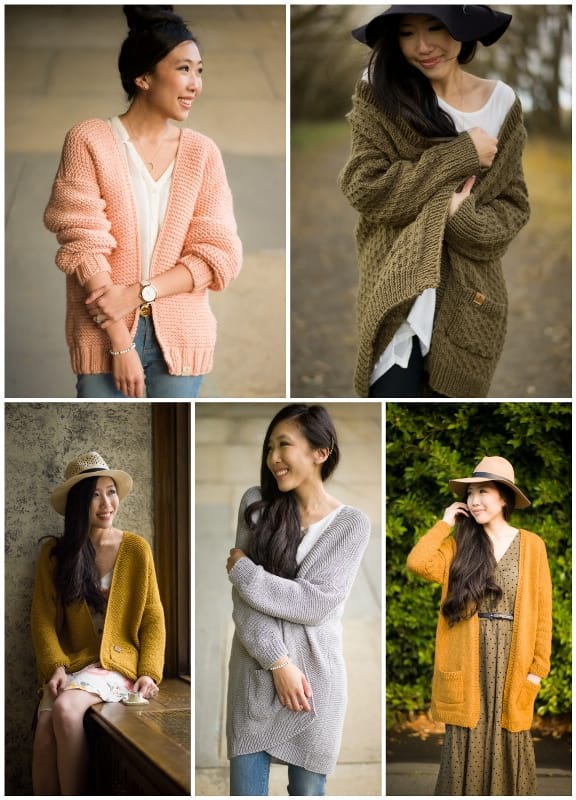
{This post is sponsored by Lion Brand Yarn! I’ve loved working with their yarn throughout the years and I’m thrilled that I get to collaborate with them every month!}
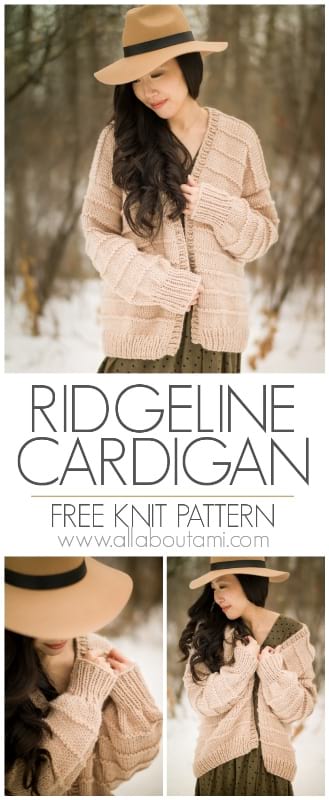
This pattern is an original pattern by Stephanie Lau of All About Ami. Please do not claim this pattern as your own. If you wish to share this pattern, you may link to this pattern but please do not reprint it on your site. You may keep a copy for your own personal use but please DO NOT sell the pattern or distribute it.
You may sell products made from this pattern but please clearly credit the design to me, Stephanie Lau of All About Ami, and provide a link to my blog www.AllAboutAmi.com. Permission is NOT granted for mass production or factory manufacturing of any kind. Thank you for being respectful and for your understanding!
